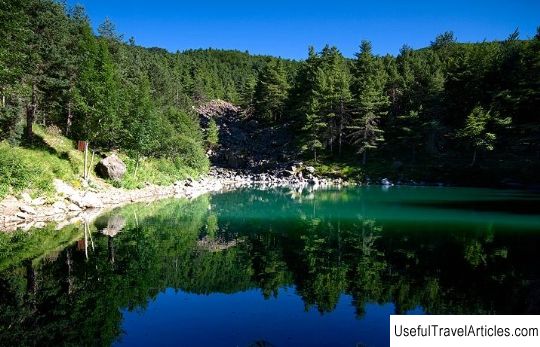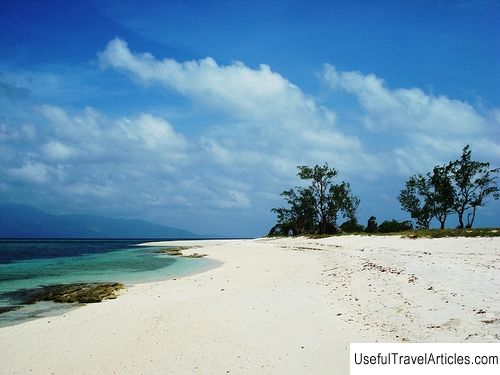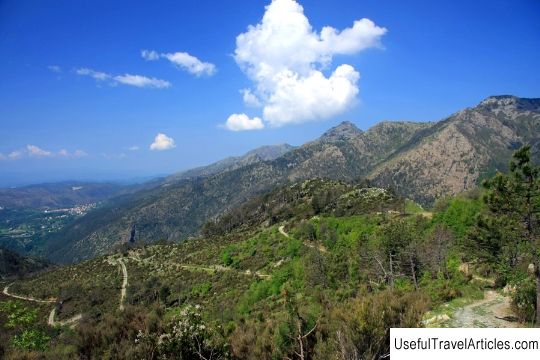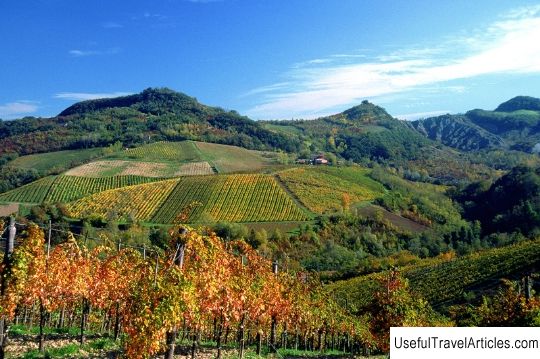Natural Park ”Aveto” (Parco naturale regionale dell'Aveto) description and photos - Italy: Genoa
Rating: 8,2/10 (2193 votes) 
Natural Park "Aveto" (Parco naturale regionale dell'Aveto) description and photos - Italy: Genoa. Detailed information about the attraction. Description, photographs and a map showing the nearest significant objects. The title in English is Parco naturale regionale dell'Aveto. Photo and descriptionNatural Park "Aveto", created in 1995 to protect one of the most beautiful and ecologically important areas of the Ligurian Apennines, is located in the province of Genoa. The history of the development of this territory goes far back centuries. According to historians, the first settlements appeared here about 7 thousand years ago, when people from the coast began to hunt and create vast pastures for livestock. They cut down huge spruces, thereby contributing to the spread of beech trees in these lands. In the era of ancient Rome, the Aveto valleys were finally colonized. By the end of the 1st millennium A.D. monks from San Pietro in Chiel d'Oro taught the local population new agricultural techniques, helped in land reclamation and the cultivation of fields. In 1797, the territory of the park became part of the Genoese Republic, and during the Second World War, several partisan detachments operated here at once. Today, the territory of the park with a total area of more than 30 sq. km. includes three valleys, each of which is unique in its own way. So, in the Valley of Aveto, along which the river of the same name flows, you can see high-mountain pastures and vast beech forests. Some of the highest peaks of the Ligurian Apennines are located here - Madjoraska, Penna, Groppo Rosso, Iona. In addition, it is a very popular tourist destination - in summer because of the cool climate, in autumn because of the abundance of mushrooms, and in winter because of the excellent skiing opportunities. The Sturla Valley boasts cattle-grazing meadows, chestnut avenues, hazel groves and olive groves. Finally, the Gravella Valley is a well-preserved rural landscape with vine and olive groves, among which there are amazingly shaped rocks, abandoned quarries and mines that attract speleologists. The history of the development of this valley is the most ancient of all three. Such a huge variety of climatic and geological conditions has contributed to the development of a rich flora and fauna in the park. Among the park's plants, the most common are beech, oak, hornbeam, ash, and along the river banks - willows and alder. One of the most important floristically important areas is Monte Bossea, named after the vast thickets of boxwood ("bosso" in Italian). The forests of the park are inhabited by the Italian wolf, roe deer, wild boar, fox, marten, numerous squirrels. The feathered kingdom is represented by golden eagles, hawks, falcons, kestrels, buzzards and other birds. The landscapes of the park, as mentioned above, are incredibly diverse. Among the most interesting places it is worth noting lakes formed by glaciers, in particular Lake Lago de Lame, Mount Penna 1735 meters high, from the top of which a breathtaking view of the Padan Plain opens to the foothills of the Alps and the Ligurian Sea, the beech grove of Mount Monte Zatta, considered one of the most beautiful in Liguria, and the artificial lake Lago di Jacopiana. No less attention deserves the creations of human hands, for example, the ancient abbey of di Borzone, built according to some sources in the 7th century, the historic mines of the Gravella Valley and the castle of Santo Stefano d'Aveto, built in 1164 in the town of the same name ... There are several settlements in the park - Santo Stefano d'Aveto, Rezzoaglio, Borzonasca, Mezzanego and Ne, each of which may be of interest to tourists. Santo Stefano d'Aveto received the Orange Flag Award in 2006 from the Italian Tourist Association, which is awarded only to small towns for the highest level of service. This is where most of the hiking or horseback trails in the park begin. In the town itself, in addition to the aforementioned 12th century castle, you can see the Church of the Blessed Virgin of Guadalupe with a bronze medallion of Christopher Columbus. In Borzonasca, rock carvings dating back to the Paleolithic and considered one of the most significant in all of Italy and Europe have been preserved. And the town of Ne is famous for the thousand-year-old Gozita oak, the Tana di Ca Frege caves and the largest manganese mine in Europe.          We also recommend reading Church of the Transfiguration of the Savior in the village of Bronnitsa description and photo - Russia - North-West: Novgorod region Topic: Natural Park ”Aveto” (Parco naturale regionale dell'Aveto) description and photos - Italy: Genoa. |




